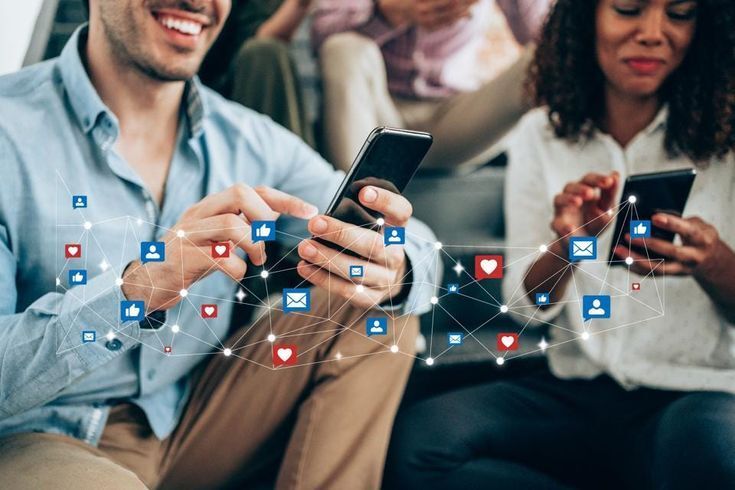AI in Marketing: Tools You’ll Actually Use
Forget flying cars and robot butlers— AI is already here, and it’s making your marketing job a whole lot easier. Not the sci-fi, budget-eating, PhD-required kind of AI either. I’m talking about everyday tools you can plug into your workflow right now to save time, boost results, and make you look like a genius at your next team meeting right now to save time, boost results.
Let’s break it down like a marketer who’s had one too many coffees and a few too many deadlines.
Say Goodbye to Blank Pages: AI for Content Creation
Ever stared at a blinking cursor for an hour, wondering how to start a blog post or LinkedIn caption?
Yeah, we’ve all been there. Tools like Jasper, Writesonic, or even the mighty ChatGPT can help you whip up draft content in seconds. Whether it’s email copy, blog outlines, social posts, or even jokes for your brand voice— AI’s got your back.
You don’t have to publish what it writes word-for-word. Use it like your brainstorming buddy. Toss in your ideas, polish what it gives you, and add your voice to the mix.
Pro tip: The better your prompt, the better the output. Treat AI like a junior copywriter who doesn’t sleep.
Smarter Ads, Less Guesswork: AI for Campaigns
Let’s be honest—running paid ads can feel like playing darts blindfolded (on a moving train). But AI is changing that. Platforms like Google Ads Smart Bidding and Meta Advantage+ automatically test ad variations, optimize budgets, and learn what converts best. No more spreadsheets from hell or late-night manual tweaks. Meta Advantage+ automatically test ad variations, optimize budgets, and learn what converts best.
Even tools like Adzooma or Madgicx help you spot underperforming ads before they eat your budget alive. It’s like having a data-obsessed intern who actually enjoys staring at analytics.
Plus, with AI-generated headlines and images, you can test creative faster without turning into a full-time graphic designer.
Email Like a Pro: AI for Personalization

You know those emails that greet you with “Hi [First Name]” and absolutely nothing else personal? Yeah… not cute. AI can help you go way deeper. Tools like Seventh Sense, Phrasee, or Smartwriter help tailor subject lines, send times, and messaging based on actual behavior.
You’re no longer sending the same generic message to everyone in your CRM. You’re sending messages based on how they read, click, and buy.
The result? Higher open rates, more replies, and fewer unsubscribes. Plus, you don’t need to become a code wizard or data scientist to make it work.
Micro-Influencers in B2B? Yep, It’s Happening
You probably hear “influencer” and think of beauty tutorials, unboxing videos, or a guy selling protein shakes on Instagram.
But here’s the twist: micro-influencers are quietly taking over the B2B world and yes, it’s working surprisingly well.
Think smaller followings, deeper trust, and very niche knowledge.
That’s what makes them gold in B2B marketing. They might not have millions of followers, but they have influence where it counts —in Slack channels, LinkedIn threads, and expert communities.
Let’s break down why these low-key experts are becoming a B2B marketer’s secret weapon.
They're Small but Mighty (and That’s the Point)
Unlike celebrity influencers, micro-influencers usually have between 1,000 and 50,000 followers.
Sounds small, right? But that’s the beauty of it.
Their followers are often hyper-engaged, meaning they actually listen, ask questions, and care about what these experts share.hyper-engaged, meaning they actually listen, ask questions, and care about what these experts share.
In B2B, that’s everything. You don’t need mass appeal, you need credibility and trust in a specific industry.
Whether it’s a cybersecurity consultant, a SaaS product reviewer, or a respected logistics analyst, they speak to the right people. When they mention your brand or solution, it feels more like a recommendation from a colleague than a paid endorsement.
Real Conversations > Polished Promotions
It’s Cheaper Than You Think (And Often Smarter)
When you partner with the right micro-influencer, you can generate qualified leads, thought leadership content, and brand awareness in one campaign. And you avoid the cringe factor of trying to turn your brand into a TikTok dance trend (please don’t).
How You Can Start Using Micro-Influencers Today
First, find them. Search LinkedIn, industry forums, niche YouTube channels, or B2B Twitter/X accounts with real engagement.
Then, build a relationship. Don’t pitch them out of the blue with “collab?” emails. Follow, comment, and share their content first.
Finally, think long-term. Micro-influencer marketing works best when it’s genuine, recurring, and rooted in real expertise. You’re not just renting their audience, you’re joining their network. That’s powerful.
The Rise of Interactive Content in Buyer Journeys

Let’s be honest, most B2B content feels like homework. You click a blog, scroll a bit, and quietly fall asleep inside. But now? Buyers want to click, explore, and engage not just read and yawn. That’s where interactive content comes in.
It’s not just a buzzword. It’s changing how people research, evaluate, and choose B2B solutions, especially in long buyer journeys.
From quizzes to calculators to product tours, interactive content turns passive viewers into active participants. And that changes everything.
Your Buyers Are Tired of Static Content
Today’s B2B buyers are smart, busy, and allergic to information overload. They don’t want another PDF to download and ignore. They want content that answers real questions in real time and makes them feel in control of their journey.
That’s why tools like ROI calculators, comparison tools, and interactive infographics are becoming go-to weapons in the marketer’s toolbox.
They give value up front. Instead of saying “we’re great,” they say “here’s how we can help you specifically.” And let’s face it, wouldn’t you rather play with a tool than scroll through a 1,500-word wall of text?
Interactive = Memorable (And Shareable)
They’re not just consuming, they’re participating. And participation creates connection.
From First Click to Final Decision
Ready to Get Interactive?
If you’re not using interactive content yet, don’t panic, you’re not late. But it’s definitely time to level up. Start small. Maybe a quiz, a pricing estimator, or a clickable checklist on your blog.
Use tools like Outgrow, Typeform, or Involve.me to build without code and test what your audience likes.
Measure what works, see what people click on, and build from there. Your buyers want more than just content—they want an experience. And interactive content is how you give it to them.
Privacy & Personalization: Walking the Tightrope
In B2B marketing, personalization is powerful, but crossing the line into “creepy” territory is surprisingly easy (and awkward).
You want to say, “We know you,” not, “We’ve been watching you scroll at 2 a.m. last Tuesday.”
That’s the challenge we’re all facing, giving buyers a tailored experience without freaking them out or breaking privacy rules.
Welcome to the tightrope of modern marketing. You’ve got to balance relevance and respect, and yes, it's a little wobbly sometimes.
Personalization Isn’t Dead—It’s Just Growing Up
Let’s be clear, personalization still works. Actually, it works better than ever, when you do it right. Nobody wants to read “Dear Valued Customer” anymore. You wouldn’t send a generic message to a friend, so why do it in business? But personalization today is more than using someone’s name or job title. That’s the bare minimum.
Now, it’s about understanding someone’s challenges, stage in the buyer journey, and industry context and then tailoring the experience accordingly. With tools like HubSpot, Clearbit, or Mutiny, you can do that at scale, without sounding robotic or invasive.
Privacy Laws Are Here to Stay— And That’s a Good Thing
It’s tempting to think privacy laws like GDPR or CCPA are just marketing blockers. But honestly, they’ve helped us become better marketers. They force us to collect data with permission, and that means cleaner lists and higher intent leads.
Nobody likes spam. Nobody likes being tracked secretly. And nobody trusts brands that act shady with their data.
So instead of tricking users into giving you info, create value so they want to engage and share with you. Give them something worth trading their email for; like a calculator, template, or an actually-helpful ebook (no fluff, please).
Trust Is the New Currency in B2B
You’re not just selling software or services, you’re selling trust. And trust grows slowly, especially in the B2B world. The more transparent you are about how you collect, store, and use data, the stronger that trust becomes. Add a simple explainer next to your forms.
Let users choose how much data they want to share. It’s not just a checkbox anymore, it’s a chance to show you care about your audience’s comfort and control. And trust me when people feel safe, they convert more often. Safety leads to confidence, and confidence leads to sales.
Finding the Sweet Spot: Personalize Without Overstepping
So, how do you find the balance between privacy and personalization? Start with relevance, permission, and transparency. Ask for data when it makes sense. Offer something valuable in return. And don’t assume people want to hear from you daily.
Use first-party data, behavior-based triggers, and smart segmentation, but keep it human, not creepy. You’re not trying to be a mind reader. You’re trying to be helpful, timely, and respectful.
When you walk that tightrope well, you’ll create experiences that feel customized and ethical, and that’s the future of digital marketing.
Let’s Bring It All Together
We’ve just walked through some of the most exciting shifts happening in B2B marketing, and none of them involve boring brochures.
From micro-influencers making waves, to AI tools doing your heavy lifting, it’s clear that the rules are changing fast. Buyers don’t want to be sold, they want to explore, interact, and connect with real value along the way.
That’s where you come in with content that’s smart, tools that help, and experiences that feel tailored without being creepy. Interactive content isn’t just flashy, it helps people make decisions. And personalization? Still powerful, if you also protect their privacy. You don’t need to master everything overnight.
Test one thing, then another. Keep it human. Keep it honest. This isn’t about chasing trends. It’s about building trust, adding value, and making connection that doesn’t feel like marketing.
So go ahead, experiment boldly, personalize kindly, and let your B2B brand shine brighter than ever before.

